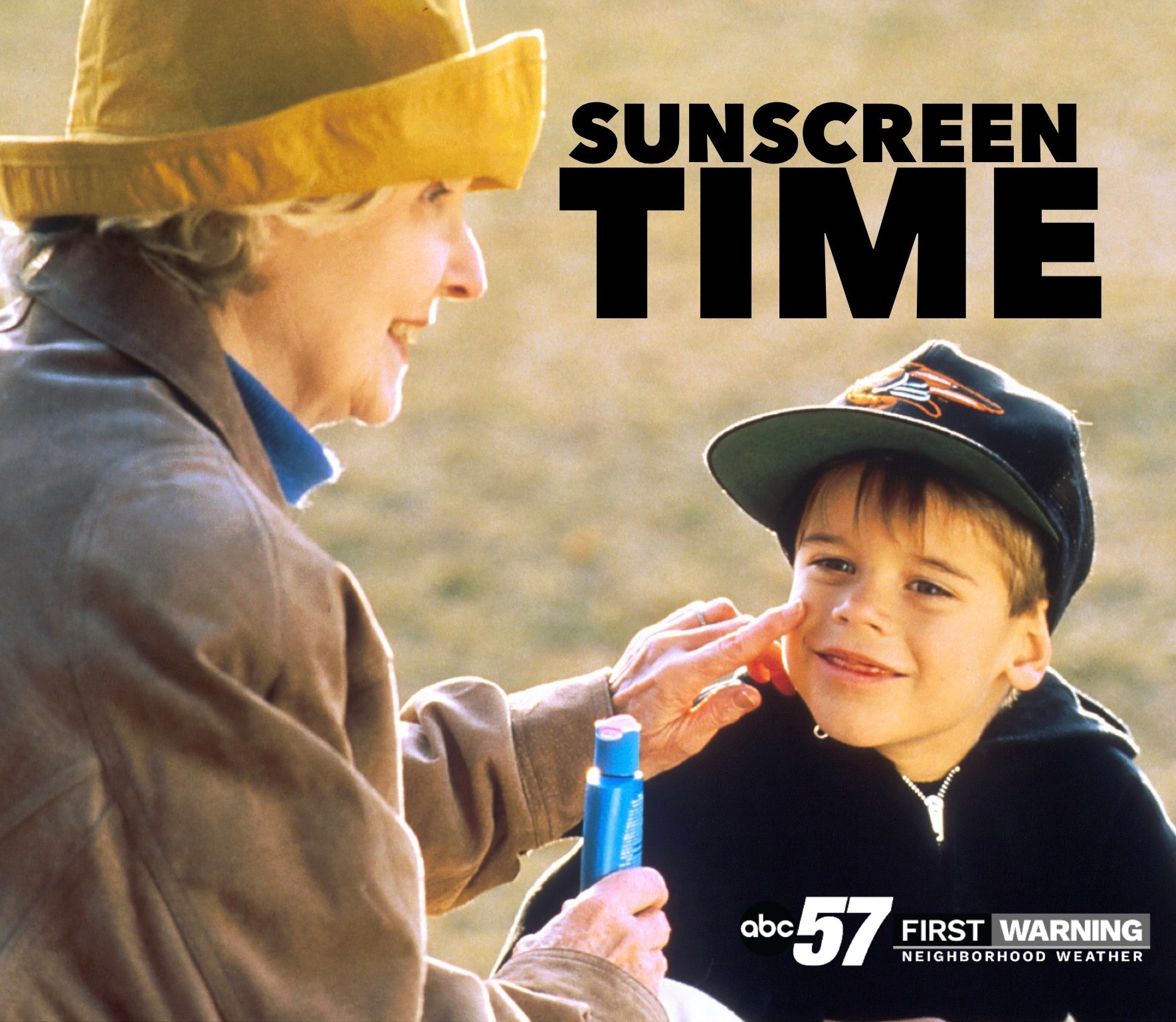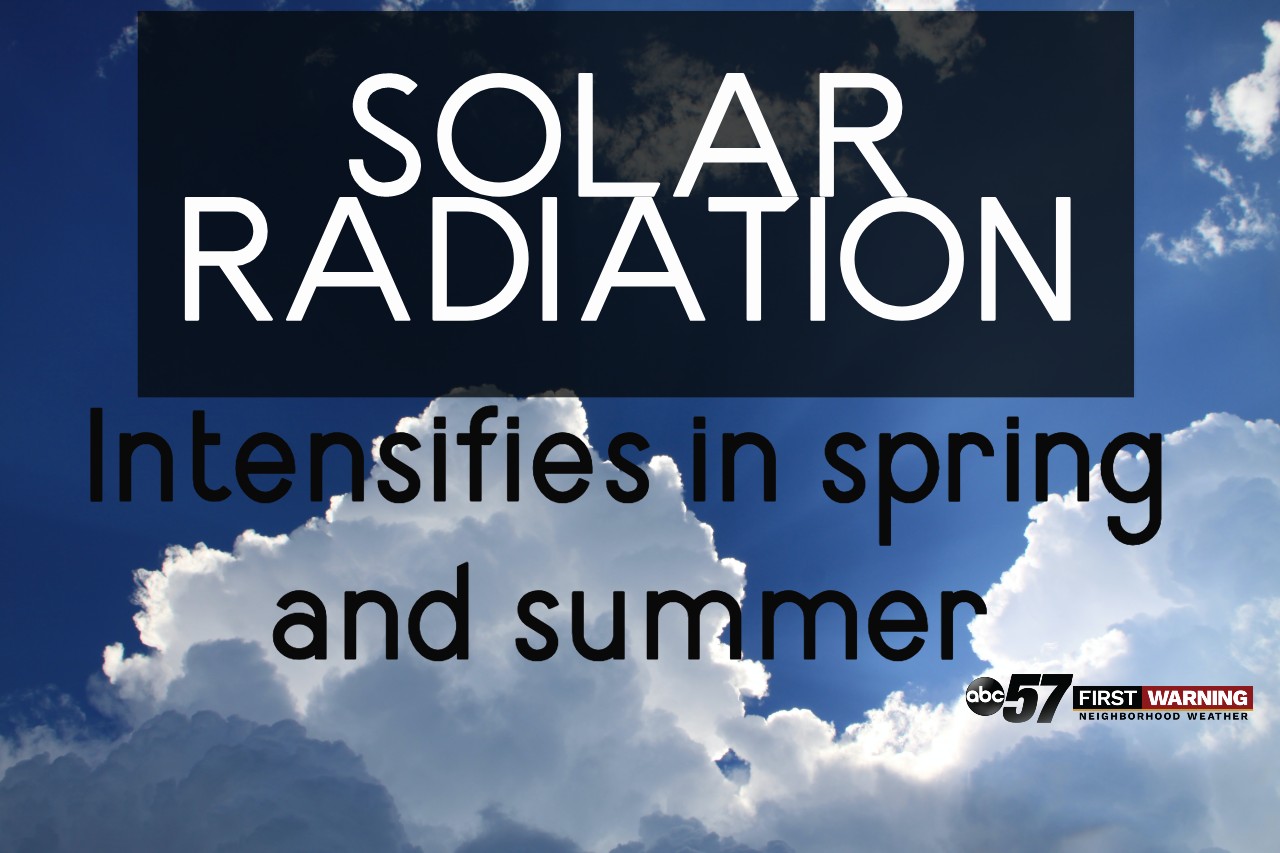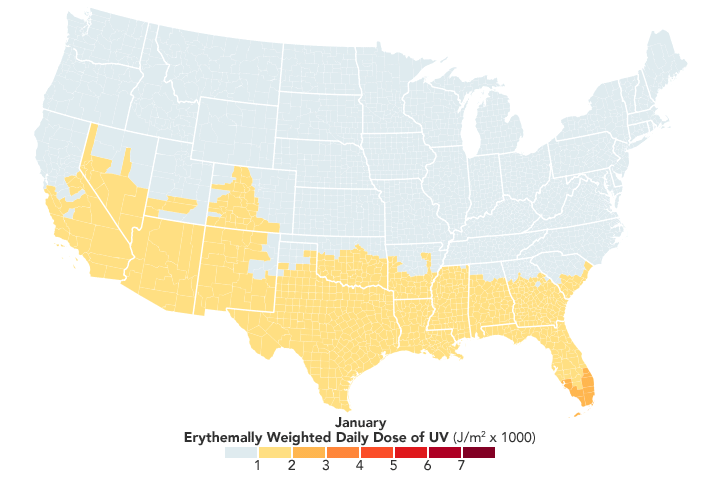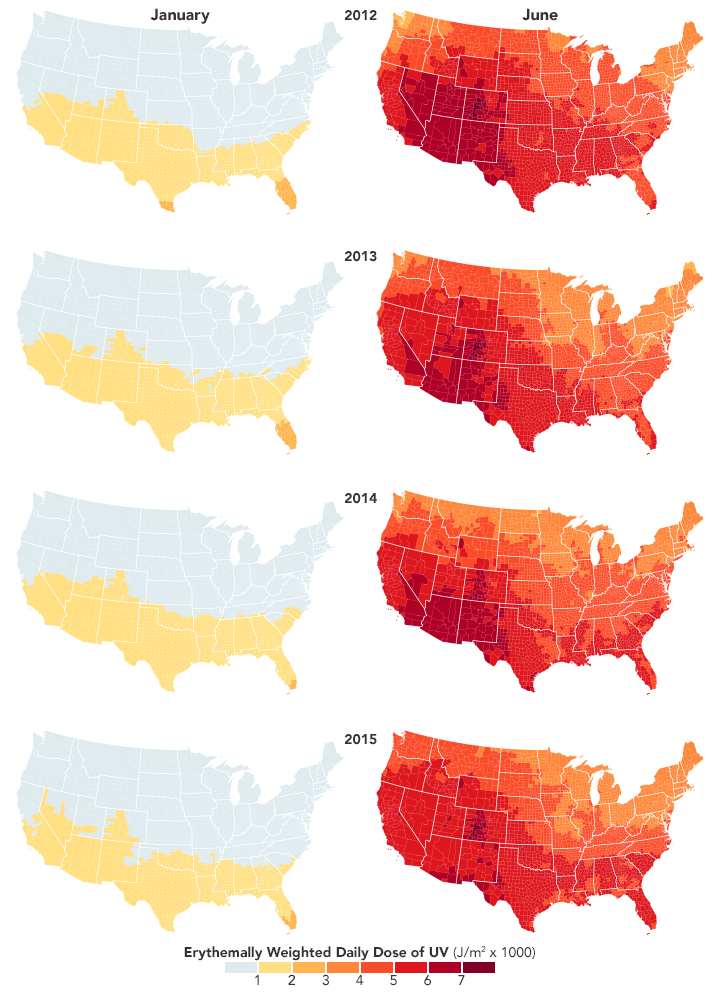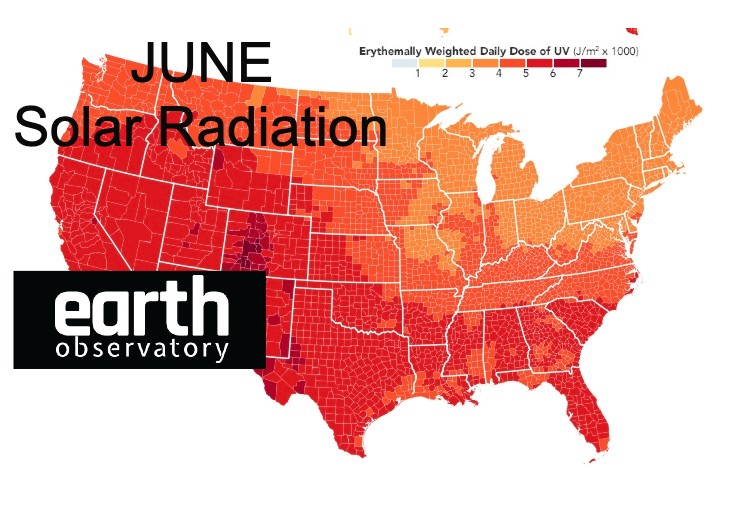Sunburns are still possible when temperatures are chilly
One important message this spring as temperatures have struggled to warm: sunburns are still possible right now, even on chilly days.
Radiation from the sun becomes more intense in the US during the spring and summer months.
NASA released ultraviolet (UV) radiation maps which show how much of the sun's radiation reaches each surface, broken down by month. Blue and tan on the map correlate to little or no UV concern. These happen in the late fall and winter months. Later in the loop (the late spring and summer months), darker reds and oranges mean more UV radiation.
These images compare UV radiation in the months of January (on the left) to June (on the right) from 2012 to 2015. We receive the least radiation in January, which makes sense. Surprisingly, even though June isn't the warmest month of the year, it receives the most solar radiation.
We typically associate sunburns with hotter months, like July or August. Because of this, many people don't think to put on sunscreen until one of these hot days. This data shows we might need to rethink this mindset. We should put on more sunscreen in May and June because we get more UV rays in those months. This means putting on sunscreen even when it isn't the warmest time of year.
Don't wait to lather on the sunscreen if you're headed outside soon, or you might need the aloe!















